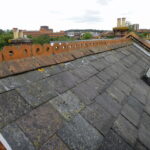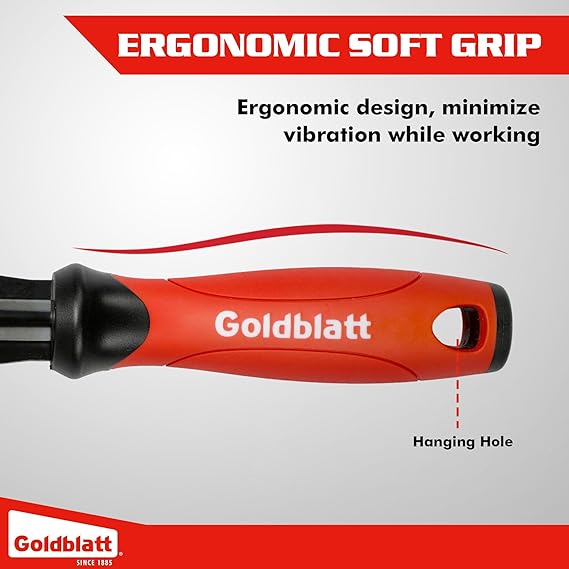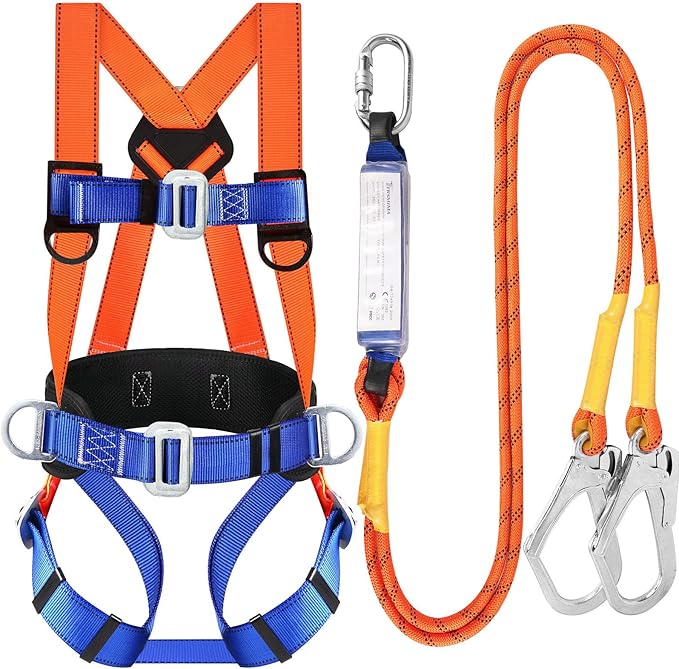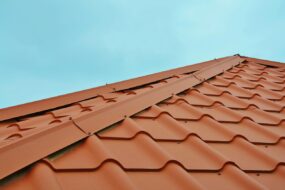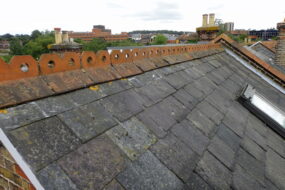
Rain finds the tiniest gaps. We’ve seen it too many times on homes across Western Washington, one missing kickout or a tired pipe boot, and suddenly there’s stained drywall and a musty attic. That’s why understanding the types of roof flashing isn’t trivia: it’s home protection 101. There are different types of roof flashing, each designed for specific areas and functions, and knowing these types is essential for effective roof maintenance and leak prevention.
In this guide, we’ll break down how roof flashing works, the common materials we rely on, and where each type belongs, from sidewalls and chimneys to valleys and drip edges. We’ll keep it practical, but we won’t shy away from real-world detail either. Roof flashing is important because it acts as a waterproof barrier, protecting vulnerable roof areas from water infiltration and preventing costly water damage.
How Roof Flashing Works and Common Materials
Flashing is the thin metal flashing, thin material, or sometimes flexible barrier that bridges joints, where roofing meets walls, chimneys, skylights, roof features, and edges. The principle is simple: shed water by layering pieces so every upper piece overlaps the lower one. Gravity does the work. Sealant is backup, not the hero.
Flashing is designed for directing water and to direct water away from vulnerable areas and roof features, such as valleys, chimneys, and skylights, ensuring a watertight seal and waterproof seal at these critical points. This is essential for maintaining the structural integrity of the roofing system and roofing systems as a whole.
We typically install flashing over underlayments (and in vulnerable zones, over an ice-and-water barrier). In windy squalls off the Puget Sound, those overlaps and step-by-step shingle integration matter more than any bead of caulk. Proper installation and proper flashing are crucial for long-lasting protection and effectiveness, especially where the roof plane or roof plane meets vertical surfaces or roof penetrations.
Common flashing material and metal flashing types include galvanized steel, aluminum, copper, and occasionally lead or stainless. Choosing the right flashing material and matching it to the roof materials, roofing material, and roof flashing sizes is important for compatibility and performance. Steel is cost-effective and tough, especially when properly coated.
Aluminum is light and easy to bend, though it can react with wet concrete or certain woods. Copper is premium, provides long lasting protection, and is solderable, great for chimneys and high-visibility details. Lead boots conform beautifully around pipes but can attract curious squirrels. Stainless shines in coastal environments where salt spray chews up lesser metals, offering long lasting protection.
There are various roof flashing types, including continuous flashing, each designed for specific roof penetrations, roof penetration points, and roof features. Selecting the correct roof flashing sizes ensures a proper fit and watertight seal at all critical junctions.
Wall Intersection Flashings
Step and Counter Flashing (Sidewalls)
Sidewall intersections use step flashing woven with roof shingles: a stack of L-shaped pieces, each piece overlapping the one below by at least a couple of inches. This system is essential for preventing leaks at sidewall intersections by channeling water away from vulnerable areas. We add counter flashing on masonry, embedded in a reglet cut, or a properly lapped siding course on framed walls. The system acts like fish scales. Miss a scale, and water sneaks behind it. Most pros prefer step flashing pieces around 5×7 inches for asphalt shingles, with the vertical leg at least 4 inches tall.
Apron/Headwall Flashing
Where a roof dies into a vertical wall (a headwall), we install continuous apron flashing at the roof’s edge where the roof meets the wall. Think of it as a metal shelf that turns up the wall and out over the shingles. Apron flashing directs water away from the wall and roof intersection, helping to prevent leaks and water intrusion. We like to pair it with a peel-and-stick membrane beneath and siding or counter flashing lapped over the vertical leg.
Kickout Flashing
Kickouts go at the bottom of a sidewall where water leaves the step flashing run. That little diverter pushes water into the gutter instead of letting it cascade behind stucco or fiber cement, helping to protect exterior walls from water intrusion and damage. We’ve opened walls in Tacoma where a missing kickout caused years of rot. It’s not optional: it’s critical to install kickout flashing correctly to ensure water is diverted away from the wall and into the gutter system. For a deeper dive, see InterNACHI’s overview on kickout flashing.
Flashings for Openings and Penetrations
Chimney Flashing (Base and Counter: With or Without Crickets)
Chimneys, as a roof feature, need a two-part system: base flashing (including step pieces along the sides and an apron/saddle at the upslope) and separate counter flashing let into the mortar joints. This specialized flashing installation is essential to prevent water penetration at the chimney-roof junction. On wider chimneys, we build a cricket to split the water and reduce debris buildup. The International Residential Code calls for a cricket or saddle where a chimney is wide enough to trap water: see IRC 2021, R1003.20. Copper or stainless is our go-to on masonry, since soldered seams last and help create a durable waterproof seal to protect both the chimney and the roof.
Skylight and Roof Window Flashing Kits
Modern skylights ship with dedicated skylight flashing kits. Use them. These kits typically include key components such as head flashing, step flashing, and sill flashing, all designed to prevent water infiltration around the skylight, especially at the top junction where leaks are most likely. The profiles account for roof pitch, roofing type, and water channels. Many skylight manufacturers include or recommend specific skylight flashing kits for their products to ensure proper installation and waterproofing. Velux, for example, publishes kit selection guidance for shingle and metal roofs (Velux flashing resources). In our rain-heavy climate, we also run a self-adhered underlayment around the curb and up the sides for belt-and-suspenders protection.
Pipe Boots and Vent Flashing
Plumbing vents, B-vent, and exhausts are all examples of roof penetrations that require proper sealing to prevent leaks. A vent pipe is a common type of pipe that passes through the roof and needs specialized flashing. Vent pipe flashing is designed specifically to create a watertight seal around vent pipes, typically featuring a metal base and a rubber or plastic collar to fit snugly around the pipe.
EPDM boots work for typical temps: high-temp silicone is better near metal roofs or hot stacks. Lead boots conform easily, but critters sometimes chew them, yes, really. We’ve replaced more than a few. Products like Oatey’s Master Flash show the range of configurations (Oatey roof flashings). The key detail: slide shingles over the flange, not under, and seal fasteners above the water line.
Transition and Edge Flashings
Valley Flashing (W-Valley, Open, and Closed)
Valleys form where two roof planes intersect, creating a critical area for water flow concentration. We like open metal valleys with a W-profile rib in high rainfall areas: that center rib helps block cross-wash in heavy storms and effectively channels water away from the intersection of the roof planes. Closed-cut valleys (shingles lapped and cut) can be fine when detailed per the shingle manufacturer, but open metal is more forgiving over time. Many manufacturer manuals outline both methods, so check the current technical guides from GAF or Owens Corning before you commit.
Drip Edge and Gutter Apron
Drip edge flashing is a key component for protecting roof edges by directing water away from the fascia, eaves, and roof deck, preventing water damage and pest intrusion. The 2021 IRC requires you to install drip edge flashing at eaves and rakes for asphalt shingles: see R905.2.8.5. When installing drip edge flashing, ensure it is properly placed along the roof edges, and apply roofing cement underneath the flashing to secure it and create a watertight seal. A gutter apron tucks into the gutter and overlaps the eave course, preventing capillary wicking behind the gutter. Small part, big payoff.
Pitch Change and Roof-to-Roof Transition Flashing
Where one roof plane meets another—such as where a shallow porch roof meets a steeper main roof—we install a pitch-change flashing (sometimes a Z-style) at this critical roof plane meets junction. On metal roofs, that often includes closures and sealant under a raised transition trim. On shingle roofs, we integrate a wide apron flashing with membrane underlay. I almost forgot to mention: when snow is common, say, up toward Snoqualmie Pass, ice-and-water shield at the transition is cheap insurance (and in some areas, required per IRC R905.1.2).
Selection, Installation, and Maintenance Essentials
Material Compatibility and Corrosion Risks
Dissimilar metals can corrode each other. Copper against bare aluminum flashing? That’s asking for galvanic trouble. Aluminum flashing is lightweight and versatile, but it is chemically reactive and can degrade, especially when in contact with alkaline or masonry surfaces, unless properly coated. We match metals when possible and use isolating membranes when we can’t. Near coastal air, stainless fasteners with stainless or copper flashings hold up best. GAF has a helpful advisory on dissimilar metals. Also watch treated lumber: some preservatives can be aggressive toward standard galvanized coatings: stepping up corrosion resistance is wise.
Sizing, Overlaps, and Sealants
Choosing the correct roof flashing sizes is half the battle. Step flashing pieces should extend well onto the shingle and rise at least 4 inches up the wall, and selecting the right size ensures a proper fit and effective waterproofing. We lap vertical and horizontal seams 2–4 inches, depending on exposure, and we never rely solely on sealant. Sealants (polyurethane or butyl) are there to support laps and terminations, not replace them. In valleys and at penetrations, a strip of self-adhered membrane under the metal adds redundancy, particularly in wind-driven rain or freeze-thaw zones. Roof flashing important because it acts as a waterproof barrier, protecting vulnerable areas from leaks and water damage, and is crucial for maintaining the roof’s integrity.
Inspection, Maintenance, and When to Replace
After big storms, we do a quick scan: loose counter flashing, rust blisters, lifted drip edge, cracked pipe boots. Any pinholes or separated solder joints on copper? Time to repair. Boots tend to age out around the same time shingles do, but sun-baked south slopes can fail sooner. Regular inspections and maintenance are essential for preventing leaks and help prevent leaks by catching issues early. Maintaining proper flashing is crucial to ensure long-term roof performance and to avoid water infiltration. According to IBHS guidance on resilient roofs, controlling water at joints and edges dramatically reduces interior damage in wind-driven rain events (IBHS FORTIFIED Roof).
Conclusion
Roof flashing isn’t glamorous, but it’s the unsung edge that keeps water out. When we choose the right material, layer pieces correctly, and install the small stuff, kickouts, crickets, drip edge, the roof system just works.
If you’re tackling a re-roof or chasing a mystery leak, start by mapping every change in plane and penetration, then match the flashing type to the detail. And if you need a second set of eyes here in Washington, we’re always glad to point you toward hiring roofing pros. Keep the water moving off your home, and the rest of the system breathes easy.
For code and technical references, see the 2021 IRC on flashing and chimneys (R905.2.8.5, R1003.20) and skylight/valley details from major manufacturers.
Frequently Asked Questions: Types of Roof Flashing
What are the main types of roof flashing and where are they used?
The main roof flashing types include step and counter flashing for sidewalls, apron/headwall flashing where a roof meets a wall, kickout flashing at the eave end, chimney base and counter flashing with crickets, skylight kits, pipe boots, valley flashing (open W or closed), drip edge/gutter apron, and pitch-change/roof-to-roof transitions. Each of these roof flashing types serves a specific function in preventing water infiltration at critical roof junctions such as chimneys, vents, and dormers.
How does step flashing differ from counter flashing on sidewalls?
Step flashing is a series of L-shaped pieces woven with shingles, each overlapping the one below; pros often use 5×7-inch pieces with a vertical leg at least 4 inches. Counter flashing covers and seals the top edge—embedded in masonry or lapped by siding—so water can’t sneak behind the step pieces.
When is a chimney cricket required, and what materials work best?
A cricket (or saddle) is required by the 2021 IRC (R1003.20) when a chimney is wide enough to trap water on the upslope side. Use a two-part system—base plus separate counter flashing—and durable, solderable materials like copper or stainless steel for long-lasting seams in heavy weather. Copper flashing is especially recommended when you have a copper roof, as it ensures material compatibility and a consistent appearance. Over time, copper flashing will develop a patina through oxidation, matching the aesthetic aging process of a copper roof and other copper fixtures.
What’s the best valley flashing for heavy rain, and how does it compare to closed-cut valleys?
In high-rain areas, an open metal W-valley is often preferred among types of roof flashing because its center rib helps block cross-wash. Closed-cut shingle valleys can perform well if detailed to the manufacturer’s specs, but open metal valleys are generally more forgiving and easier to keep clear.
Can roof flashing be reused during a re-roof?
It’s usually best to replace flashing during a re-roof. Old pieces are hard to remove without bending, holes rarely align, and reusing can void shingle warranties. Exceptions exist for sound copper or stainless assemblies, but only if they integrate correctly with new underlayments and shingles after careful inspection.
Which types of roof flashing materials are best for coastal homes?
For coastal exposure, choose stainless steel or copper flashings with stainless fasteners, and isolate dissimilar metals to prevent galvanic corrosion. Standard galvanized can rust early in salt air, and aluminum may pit. Sealant is supportive only—use proper laps and a self-adhered membrane under critical details for durability.

